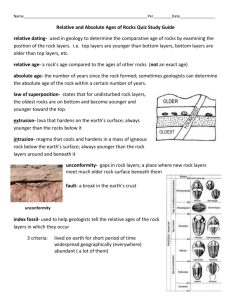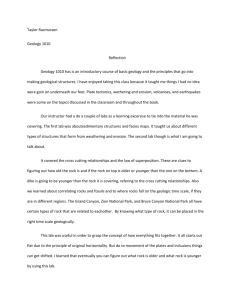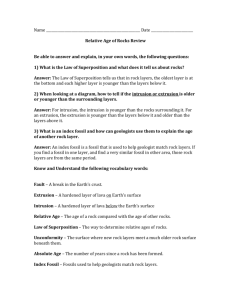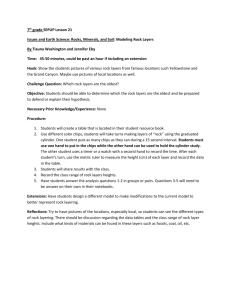Fossils Test Study Guide
advertisement
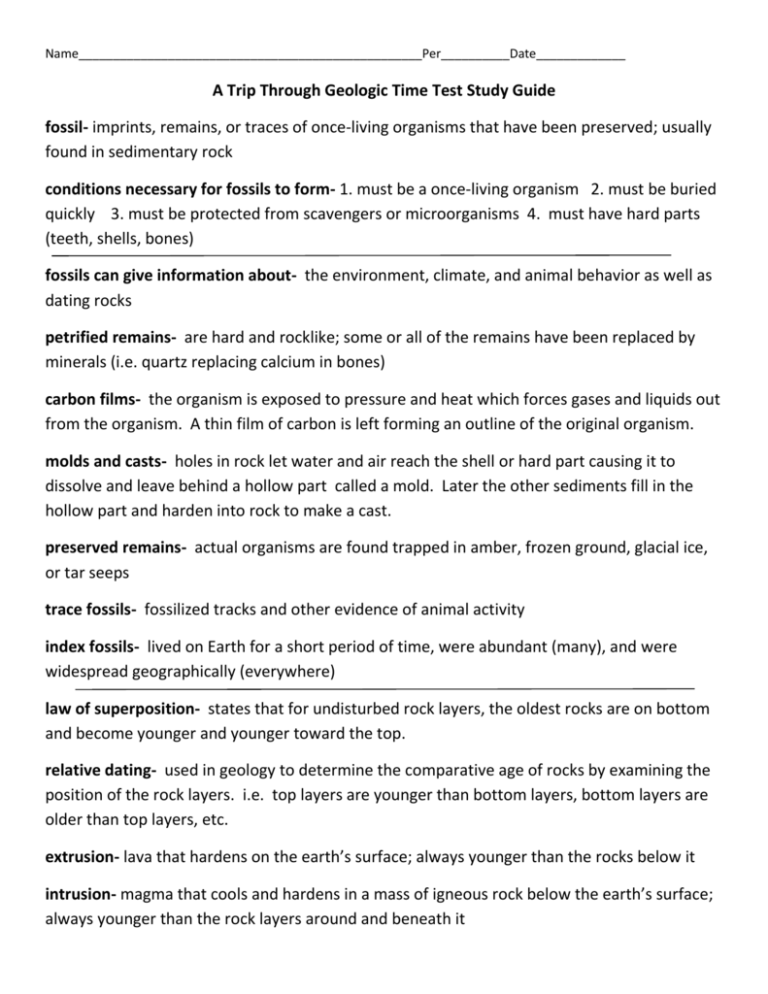
Name__________________________________________________Per__________Date_____________ A Trip Through Geologic Time Test Study Guide fossil- imprints, remains, or traces of once-living organisms that have been preserved; usually found in sedimentary rock conditions necessary for fossils to form- 1. must be a once-living organism 2. must be buried quickly 3. must be protected from scavengers or microorganisms 4. must have hard parts (teeth, shells, bones) fossils can give information about- the environment, climate, and animal behavior as well as dating rocks petrified remains- are hard and rocklike; some or all of the remains have been replaced by minerals (i.e. quartz replacing calcium in bones) carbon films- the organism is exposed to pressure and heat which forces gases and liquids out from the organism. A thin film of carbon is left forming an outline of the original organism. molds and casts- holes in rock let water and air reach the shell or hard part causing it to dissolve and leave behind a hollow part called a mold. Later the other sediments fill in the hollow part and harden into rock to make a cast. preserved remains- actual organisms are found trapped in amber, frozen ground, glacial ice, or tar seeps trace fossils- fossilized tracks and other evidence of animal activity index fossils- lived on Earth for a short period of time, were abundant (many), and were widespread geographically (everywhere) law of superposition- states that for undisturbed rock layers, the oldest rocks are on bottom and become younger and younger toward the top. relative dating- used in geology to determine the comparative age of rocks by examining the position of the rock layers. i.e. top layers are younger than bottom layers, bottom layers are older than top layers, etc. extrusion- lava that hardens on the earth’s surface; always younger than the rocks below it intrusion- magma that cools and hardens in a mass of igneous rock below the earth’s surface; always younger than the rock layers around and beneath it Name__________________________________________________Per__________Date_____________ fault- a break in the earth’s crust unconformity- gaps in rock layers; a place where new rock layers meet much older rock surface beneath them absolute dating- a method used to determine the age in years of a rock or other object. It uses the properties of atoms in rocks and other objects to find their ages. radioactive decay- the atoms of one element break down to form atoms of another element; used to determine the absolute ages of rocks half-life- the time it takes for half of the atoms of an isotope to decay (Carbon-14 = 5730 years) Carbon-14 dating- Carbon-14 has a long half-life (5730 years). Because every living thing has carbon in it, the amount of carbon-14 remaining in a dead organism can be measured to determine the age of the fossil. geologic time scale- a record of the life forms and geologic events in Earth’s history *scientists believe the mass extinction of the dinosaurs was due to an object from space crashing into Earth Honors only: invertebrates- animals without backbones vertebrate- animals with backbones


